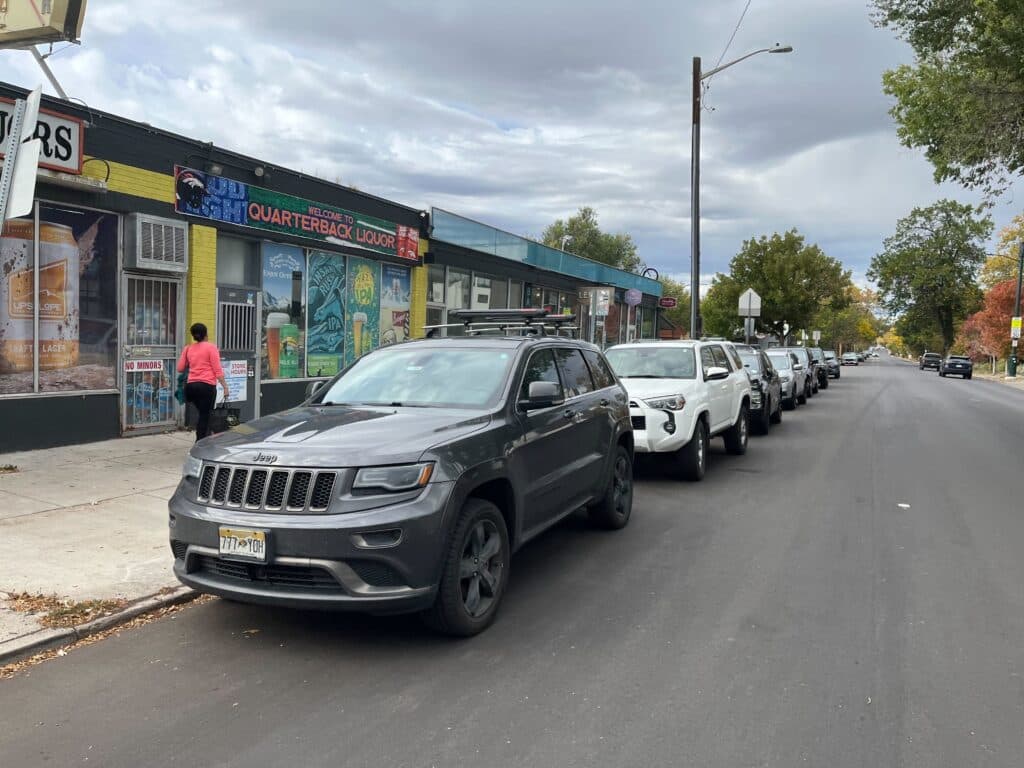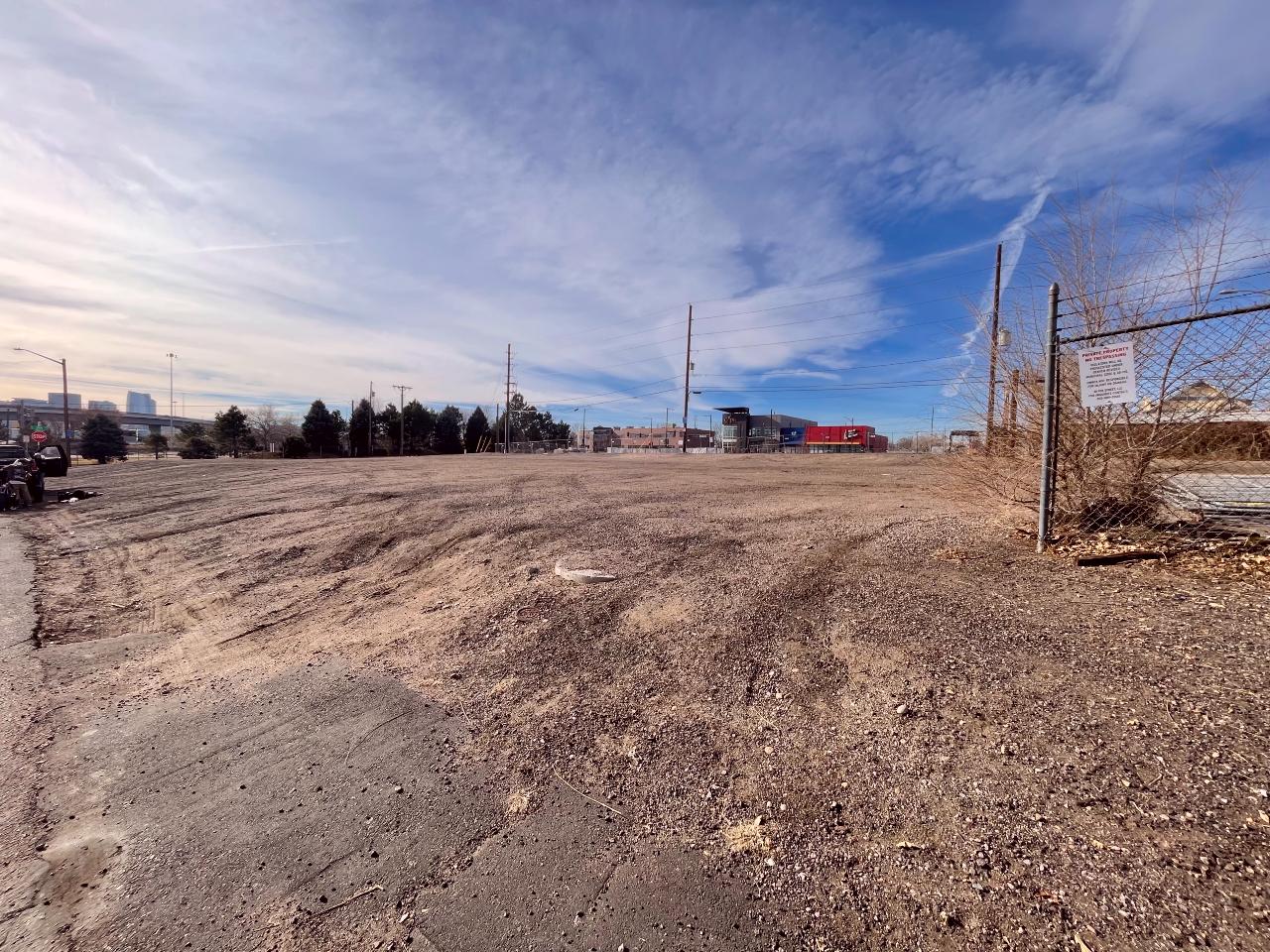Last spring, Denver officials announced plans to upgrade the bike lane along West 29th Avenue from Sheridan Boulevard to Zuni Street, lining it with posts or other barriers . The creation of the new "protected" lane was part of a citywide effort to improve road safety.
But by August, the city had watered down its plans after hearing complaints from shop owners on 29th Avenue. And last week, officials announced a more dramatic change.
The final version of the project will only include a protected lane for about 1.5 miles of its 2-mile length. The section west of Tennyson Street will remain unprotected in order to save parking spots for nearby residents and businesses.
The 29th Avenue bike lane is already a main route for cyclists traveling between the Cherry Creek Trail, downtown, Highland and northwest Denver, and it will likely become more popular once improvements are completed by spring 2025. Other protected east-west bike lanes on the north side are few and far between.
The decision to pare the project back was immediately criticized by bicycle advocates, who saw it as city officials prioritizing the convenience of residents’ free on-street parking over cyclists' safety.
“Protected lanes are better for both car traffic and bike traffic because … it keeps us from getting into the road and keeps them from getting into us,” said David Fay, who lives just a few blocks off 29th and often drives and bikes on the street.

Some residents, on the other hand, say they are grateful the city listened to their concerns after they say the project was sprung on them earlier this year.
City officials said they removed plans for protection from the half-mile stretch to “balance the needs of the community.” That part of the road will still see safety improvements like a lower speed limit and speed cushions. The city still plans to install bike lane protections in the eastern section, from Zuni Street to Tennyson Street.
“I totally understand that it doesn't go as far as some of our bike advocates would like to see, but we are improving the safety of this corridor, absolutely,” DOTI community designer Molly Lanphier told Denverite.
The West 29th Avenue bike lane plans were on a fast track.
The city has long known that West 29th Avenue is dangerous. It’s part of the city’s “high-injury network” of roads that account for a disproportionate share of traffic deaths and serious injuries. Between 2018 and 2024, nearly 300 crashes were reported to Denver Police, with 11 resulting in serious injuries and one in a death, a city analysis says.
The city is trying — and so far failing — to eliminate traffic deaths and serious injuries through its ambitious “Vision Zero” plan. Mayor Mike Johnston has sought to jumpstart the effort through more automated enforcement and other relatively quick fixes.
Longer-term, though, the city is striving to redesign its most dangerous streets and has big goals to shift more drivers onto bikes and transit. Some major roads will get bike lanes, officials say, and 29th Avenue is a priority.

In January, 29th Avenue made it onto DOTI’s schedule for repaving this year — a perfect opportunity to upgrade the bike lane. Planners at the department began working up a slate of safety changes that could be baked into the paving project. Unlike a complicated project like the Broadway bike lane, which took the city years to complete, this one was on pace to take a fraction of that time.
“We do move really quick … when we have a paving-bike lane project,” Lanphier said.
The city sent out about 7,000 mailers and in April held its first public meeting on the project, where the top concern from residents was a desire to slow traffic, Lanphier said. Protected bike lanes can slow traffic by reducing drivers’ perceived space and encouraging them to drive more cautiously.
In July, the city collected more than 200 responses to a non-scientific survey that indicated support for removing parking and adding a protected bike lane. More than half of the respondents said they lived or owned a business within a few blocks of 29th or traveled the street daily.
But then city officials started to hear from worried residents and business owners.
In August, the city adjusted its plans — saving parking spots in front of businesses by eliminating some of the bike lane buffers in the western stretch of the project. That left just two-and-a-half blocks of protected bike lanes between Sheridan and Tennyson. Protecting cyclists in that section would have removed around 17 on-street parking spots.
But residents were still upset. Lanphier said more than 100 people reached out to the city even after the August design was supposedly final.
One of those worried residents was Alicia Wilkinson, a homeowner on West 29th Avenue. Wilkinson said she often bikes with her husband and six-year-old son in the neighborhood and was initially excited to hear that safety improvements were planned.
Then she learned she would have lost the on-street parking in front of her house, forcing her to park on a side street about a block away. On some days, she said, that would be a minor inconvenience.
“But other days, carrying a sick child or an elderly parent trying to get them to a car, that impact — that's what seemed unreasonable,” she said.
So, she went door-to-door in her neighborhood, talking to other residents about the city’s plans.
“A majority of the people that we talked to had no idea this was happening,” she said.
Amy Ford, DOTI’s executive director, met with residents and ultimately made the decision to cut the protected bike lane and keep the parking on those few blocks, Lanphier said.
Wilkinson said she appreciates the change, even if she was disheartened by some of the heat she took from internet commenters after appearing in earlier news stories about the bike lane.
“I think with community input, all community input, the cycling community and the [local neighborhoods] such as Sloan's Lake working together, maybe there could have been a more holistic design and end result,” she said.
Read: Liam Stewart was killed on his bicycle last year. His dad is still fighting to make Littleton’s streets safer
The city says a protected bike still might come to the western end of 29th Avenue, eventually.
DOTI will try to do better outreach for future projects earlier in the process, Lanphier said. Still, she maintained that planned changes like the addition of 20 speed cushions along 29th Avenue will make the entire span of the project safer.
“At the end of the day, we're not going to make everyone happy,” she said. “And our ultimate goal is to try and make streets safer for everyone.”
The city is still dedicated to “transformative” bike infrastructure projects, she said, and has stood by some of its controversial works, like a protected bike lane on East Yale Avenue in south Denver. That got “very mixed reviews,” Lanphier said, but early data shows that crashes along that corridor have fallen by 20 percent since it was installed.
If speeding remains a problem on 29th Avenue after the project wraps up, Lanphier said they’ve told residents that a protected bike lane is “still on the table.”
“We will look at our evaluation and the data that it gives us and continue to make decisions that do work us toward Vision Zero,” she said.
Fay, the neighborhood cyclist, said protected lanes make a big difference to him. He used to commute into downtown on 23rd Avenue. The city added protected bike lanes there about four years ago.
“That feels so much better,” he said.
The city eliminated dozens of parking spots for that project, telling concerned residents that safety was more important than convenience.












